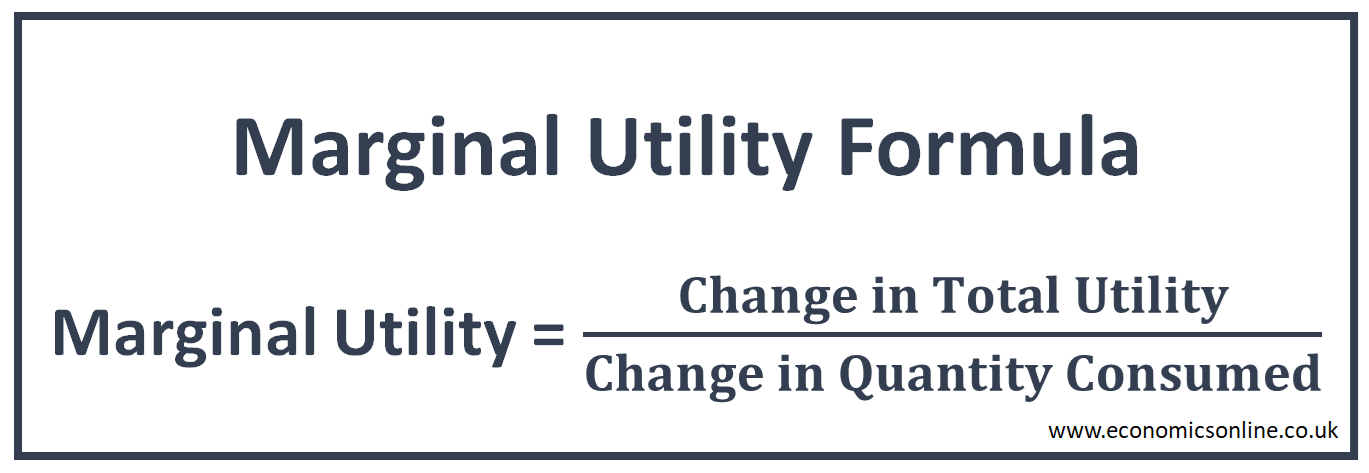
An image of a hand with white puzzle pieces.
Diminishing Marginal Benefit
Introduction
A basic assumption in economics is that rational decision makers make decisions by using marginal values or margins. Marginal values play an important role in helping economic agents make decisions in order to achieve their objectives. These marginal values can be marginal benefit or marginal cost. In this article, we will explore marginal benefit and its types in detail.
Marginal Benefit
A marginal benefit is the additional benefit received by a consumer, producer, or society due to the consumption or production of an additional unit of a product. Marginal benefit is used by economic agents such as consumers, producers, and governments, along with marginal cost, in order to make economic decisions about production or consumption.
Marginal Benefit Formula
The following formula is used to calculate the value of the marginal benefit.
Marginal Benefit = Change in Total Benefit / Change in Quantity

Marginal Benefit Examples
There are many examples of marginal benefit. The additional satisfaction or utility gained by a consumer from the consumption of an additional unit of a product is the marginal benefit for a consumer. Let’s say that the consumer is eating chocolate. The satisfaction received by consumer from the consumption of one additional chocolate is the marginal benefit for that consumer. Similarly, the additional revenue earned by a producer from the sale of an additional unit of a product is the marginal benefit for producer.
The Law of Diminishing Marginal Benefit
The law of diminishing marginal benefit is also called the principle of diminishing marginal benefit. This law states that the additional benefit received by an economic agent, decreases with an increase in the quantity of the product. This law is helpful for producers, consumers and the society in making better decisions for resource allocation. The specific examples of this law will be explained in the upcoming sections of this article.
Types of Marginal Benefits
There are many types of marginal benefits. These types are defined on the basis of the decision maker or the type of decision under consideration. These types will also help us understand the law of diminishing marginal benefit. The following are some main types of marginal benefits:
Marginal Utility (MU)
Marginal utility (MU) is the marginal benefit defined for consumers when they do consumption of products. It is the additional satisfaction gained by a consumer from the consumption of an additional unit of a commodity.
The cardinal approach to utility theoryIt assumes that utility can be measured numerically in terms of ‘utils’. The following formula is used to calculate marginal utility.
Marginal Utility = Change in Total Utility / Change in Quantity Consumed

The law of diminishing marginal utility is a specific example of the law of diminishing marginal benefit. According to the law of diminishing marginal utility, the extra satisfaction gained by a consumer, decreases with an increase in the consumption of commodity. In simple words, the marginal utility decreases with an increase in the quantity consumed. It means that the marginal utility of the first unit of consumption will be maximum, and for second unit, it will be less than that of the first unit. The following graph illustrates this concept.

In the above graph, quantity consumed is taken on the horizontal axis (x-axis), while marginal utility is taken on the vertical axis (y-axis). The downward-slope of the graph illustrates that the value of marginal utility decreases with an increase in the consumption of product. At point A, the quantity consumed is low and MU is high. When the consumer moves to point B, the quantity consumed increases and the MU decreases. Diminishing marginal utility of wealth says that the marginal utility of money also decreases with an increase in the amount of money.
Consumers compare marginal utility (marginal benefit) of a product with its price (marginal cost) in order to make purchase and consumption decisions. The consumer consumed the quantity for which marginal utility is equal to the market price.
Since a consumer is getting a lower marginal utility from additional units, the consumer will buy them at a lower price. This explains the logic of the downward sloping demand curve. If a consumer gets a product at a price that is lower than the marginal utility, consumer surplus increases.
It should be kept in mind that it is not necessary that the consumption of all the products follow the law of diminishing marginal benefit. For example, prescribed medications retain their utility for the long term as they continue to perform as required. The marginal benefit of necessities like bread, milk, etc. also remains constant over time.
Marginal Revenue (MR)
Marginal revenue (MR) is the marginal benefit defined for producers when they do production and sale of products. It is the additional revenue earned by a producer from the sale of an additional unit of a product.
The following formula is used to calculate marginal revenue.
Marginal Revenue = Change in Total Revenue / Change in Quantity Sold

In perfect competition, the firms are price-takers, and the value of MR remains constant. However, in imperfect markets, marginal revenue decreases with an increase in the quantity sold. Firms compare marginal revenue (Marginal benefit) with marginal cost in order to make production decisions for profit maximisation. The producer’s profit is maximum at a quantity for which marginal revenue is equal to the marginal cost. This is called profit maximisation rule.
Marginal Private Benefit (MPB)
Marginal private benefit (MPB) is the additional benefit of producing or consuming an additional unit of output for a producer or a consumer. Producers and consumers compare marginal private benefit (MPB) with marginal private cost (MPC) in order to make production or consumption decisions to maximise their welfare.
Marginal External Benefit (MEB)
Marginal external benefit (MEB) is the additional benefit of producing or consuming an additional unit of output for the rest of the society. Marginal external benefit indicates the presence of positive externalities of production or consumption. MEB is used by governments in conducting cost-benefit analysis and in correcting market failures arising from positive externalities.
Marginal Social Benefit (MSB)
Marginal social benefit (MSB) is the additional benefit of producing or consuming an additional unit of output for producers, consumers and the rest of society. It is the sum of marginal private benefit and marginal external benefit.
Marginal Social Benefit = Marginal Private Benefit + Marginal External Benefit
MSB = MPB + MEB
In cost benefit analysis, marginal social benefit (MSB) is compared with marginal social cost (MSC) in order to find the socially desirable output for which social welfare is maximised.
Marginal Revenue Product of Labour (MRPL)
Marginal revenue product of labour (MRPL) is the marginal benefit defined for producers when they hire workers. It is the additional revenue earned by a producer due to the presence of an additional worker. Firms compare MRPL with marginal cost of labour in order to find the profit maximization level of employment.
In addition to the above types, the concept of marginal benefit is also applicable in product development, financial management, risk management, entrepreneurship, supply chain, retailing, product distribution, workplace productivity, product promotion, business production, financial analysis, organizational management any many more.
Values of Marginal Benefit
The values of marginal benefit can be positive, negative or zero:

Positive Marginal Benefit
The value of marginal benefit is positive when an additional unit of product increased the total benefit. For example, if a person gets some satisfaction from eating the first slice of pizza or first burger, then eating the second slice of pizza or second burger will increase total satisfaction, which means that his marginal benefit is positive.
Negative Marginal Benefit
The value of marginal benefit is negative when an additional unit of product decreases the total benefit. For example, when a consumer consumes too much of something and adding more units will decrease his total satisfaction, then the consumer is experiencing negative marginal benefit.
Zero Marginal Benefit
The value of marginal benefit is zero when an additional unit of product does not bring any changes to the total benefit. For example, when a consumer consumes a product and does not get any additional satisfaction, the marginal benefit will be zero.
Conclusion
Marginal benefit, as defined earlier, is the additional benefit gained by economic decision makers such as producers, consumers, governments or societies due to the production or use of one more unit of a product. It is an important concept in microeconomics and is used in decision making by economic agents along with marginal cost. The use of marginal benefit helps in terms of better resource allocation.


